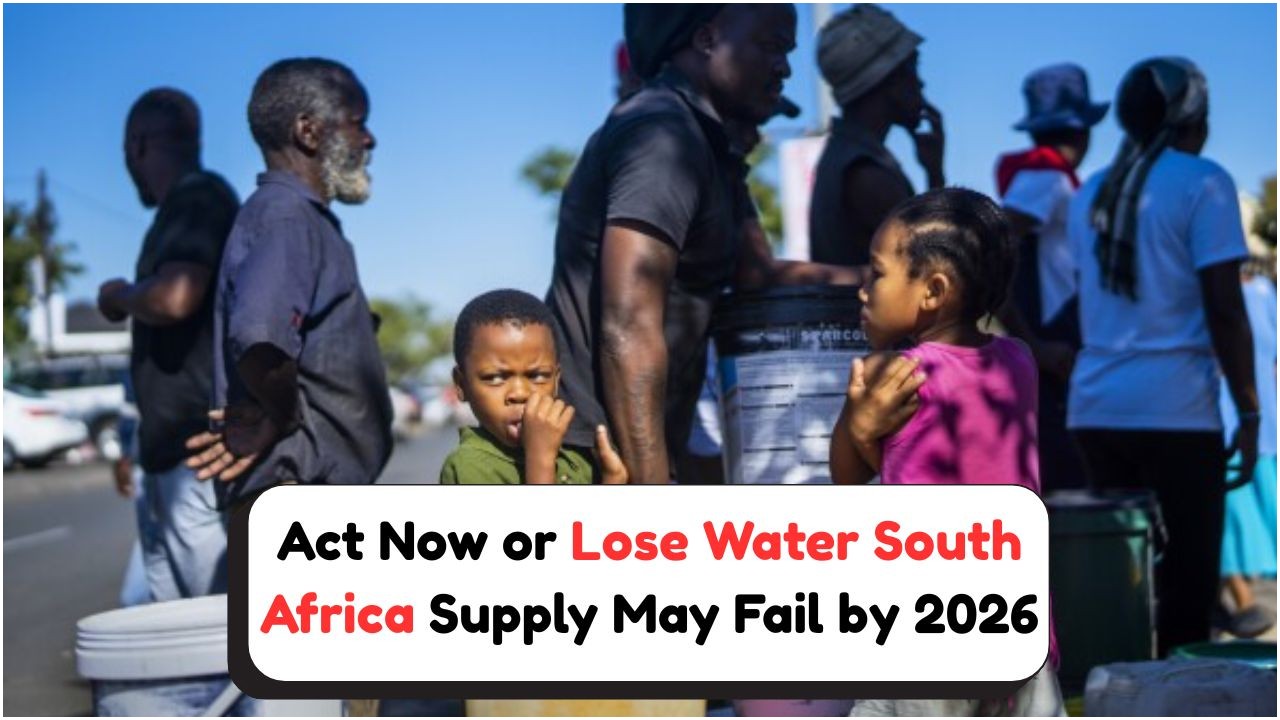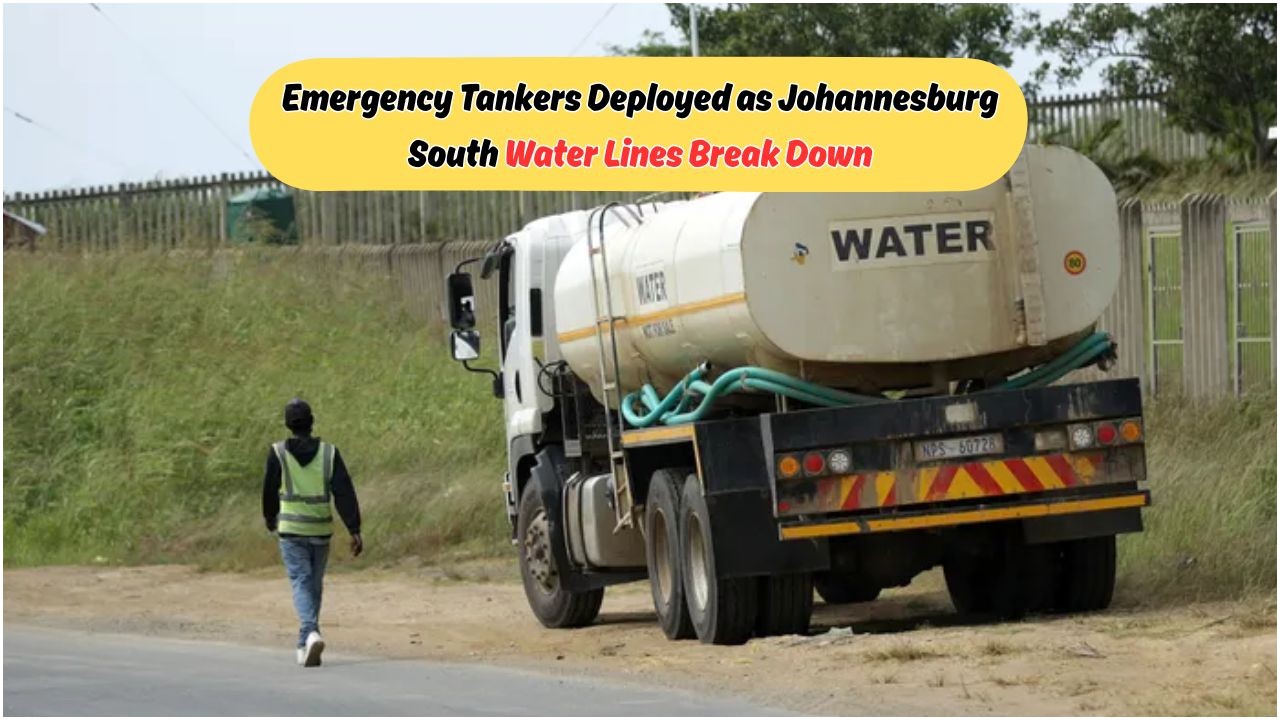Urgent Warning from Experts: SA Water Infrastructure Faces Total Collapse by 2026 Without Immediate Action: South Africa’s water infrastructure is teetering on the edge of a severe crisis, with experts issuing dire warnings that without immediate intervention, a total collapse could occur by 2026. The nation’s water systems, integral to daily life and economic stability, are under immense pressure due to aging infrastructure, lack of maintenance, and increasing demand. Water shortages have already become a reality in many parts of the country, affecting both urban and rural communities. As the situation worsens, the urgency to address these infrastructural weaknesses grows increasingly critical. Solutions must be implemented swiftly to prevent a nationwide disaster that could impact millions of lives.
The State of SA Water Infrastructure: Challenges and Concerns
South Africa’s water infrastructure faces numerous challenges that threaten its stability. Aging systems, some over 50 years old, are struggling to cope with modern demands. These infrastructures were initially designed to serve a much smaller population, and as the population has grown, the systems have become increasingly inadequate. Additionally, years of underinvestment in maintenance and upgrades have left many facilities on the brink of failure. Compounding these issues, climate change has led to more frequent droughts, further straining water resources. The consequences of these challenges are visible in recurring water shortages, with some areas facing severe restrictions.
- Outdated infrastructure unable to meet current demands
- Lack of consistent and adequate funding
- Increased strain due to climate change impacts
- Frequent water shortages affecting daily life
- Need for urgent infrastructural upgrades
Strategies for Immediate Action to Prevent Collapse
To avert a total collapse of the water infrastructure, a multi-faceted approach is necessary. First, significant investment is needed to upgrade and modernize existing systems, ensuring they can handle current and future demands. This includes replacing old pipes, expanding treatment facilities, and implementing advanced technologies for better water management. Secondly, government and private sectors must collaborate to secure funding and develop comprehensive strategies for sustainable water use. Public awareness campaigns can also play a crucial role in promoting water conservation practices among citizens. The impact of these strategies will be amplified by community involvement and education initiatives, fostering a culture of water stewardship.
- Investment in infrastructure upgrades
- Private and public sector collaboration
- Promotion of sustainable water practices
- Community involvement and education
- Implementation of advanced water technologies
Financial Implications: Cost of Inaction vs. Investment
The financial implications of inaction are staggering. An unchecked collapse of the water infrastructure could lead to severe economic consequences, including disruptions in agriculture, industry, and everyday life. The cost of emergency measures during crises often far exceeds the expenses associated with preventive actions. Investing in infrastructure today can prevent these potential losses and ensure long-term economic stability. Here is a comparison of costs related to inaction versus proactive investment:
| Cost Factor | Inaction | Investment |
|---|---|---|
| Infrastructure Repair | High due to emergency repairs | Moderate with planned upgrades |
| Economic Impact | Severe due to water shortages | Stable with reliable water supply |
| Public Health | High risk with poor water quality | Low risk with modern systems |
| Agricultural Output | Reduced due to water scarcity | Stable with sufficient supply |
| Overall Cost | Exorbitant in long-term | Manageable with upfront investment |
Government’s Role in Securing Water Infrastructure
The government plays a pivotal role in securing the nation’s water infrastructure. Policy formulation and enforcement are essential to ensuring water security and sustainable management. The government must prioritize water infrastructure in its budget, allocating sufficient resources for upgrades and maintenance. Additionally, regulatory frameworks must be strengthened to prevent water wastage and promote efficient usage. Incentives for private sector participation in infrastructure projects can also be beneficial. Beyond policy, the government needs to foster transparency and accountability in water management operations to build public trust and ensure funds are used effectively.
- Policy formulation and enforcement
- Budget prioritization for water infrastructure
- Regulatory frameworks for efficient usage
- Incentives for private sector involvement
Technological Innovations in Water Management
Technological innovations are crucial in transforming South Africa’s water infrastructure. Smart water management systems, which use data and analytics to optimize water distribution and detect leaks, are increasingly being implemented. Advanced treatment technologies can also improve water quality and reduce wastage. Innovations such as rainwater harvesting and desalination provide alternative sources of water, alleviating pressure on existing systems. By adopting these technologies, South Africa can significantly enhance its water management capabilities, ensuring a sustainable and reliable supply for the future.
| Technology | Benefit | Application |
|---|---|---|
| Smart Water Systems | Optimizes distribution | Urban areas |
| Advanced Treatment | Improves quality | Water treatment plants |
| Rainwater Harvesting | Alternative supply | Rural and urban |
| Desalination | Reduces scarcity | Coastal areas |
| Leak Detection | Minimizes wastage | Throughout networks |
Community Engagement and Education
Community engagement and education are vital components in securing the future of South Africa’s water resources. Educating citizens on water conservation practices and the importance of sustainable water use can lead to significant changes in behavior. Community-led initiatives and programs can foster a sense of ownership and responsibility towards local water resources. Schools and local organizations can play a pivotal role in spreading awareness and implementing conservation projects. By empowering communities, South Africa can create a collective effort towards preserving its water infrastructure.
FAQ Section
What is causing the water infrastructure crisis in South Africa?
South Africa’s water infrastructure crisis is primarily caused by aging systems, insufficient maintenance, and increasing demand due to population growth and climate change impacts.
How can technological innovations help in managing water resources?
Technological innovations like smart water management systems, advanced treatment technologies, and leak detection can optimize distribution, improve water quality, and reduce wastage.
What role does the government play in water infrastructure management?
The government is responsible for formulating policies, allocating budgets for infrastructure upgrades, and ensuring regulatory frameworks promote efficient water usage.
Why is community involvement important in water conservation?
Community involvement is crucial as it fosters a sense of ownership, promotes sustainable practices, and encourages local initiatives for water conservation.
What are the financial implications of failing to address the water infrastructure issues?
Failing to address these issues could lead to severe economic impacts, public health risks, and higher costs associated with emergency repairs compared to planned investments.









